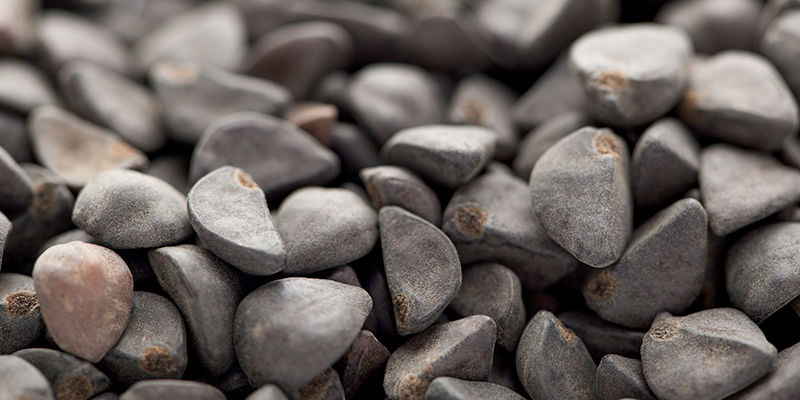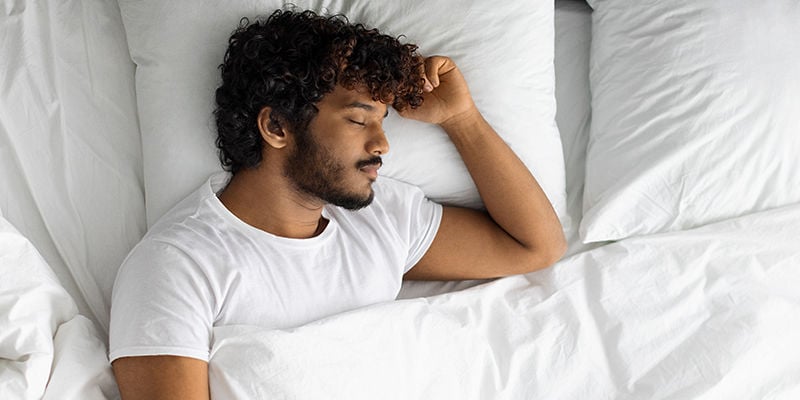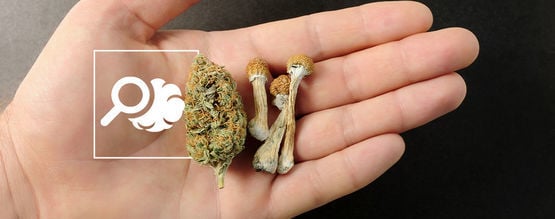
All You Need To Know About Microdosing LSA
As a naturally occurring psychedelic substance in some plants, LSA has long been favoured for its potent effects that are often likened to those of LSD. However, while trips are one thing, many are turning to microdosing for a whole host of possible well-being benefits. We take a look at what's on offer from this potential game-changer.
Naturally occurring in many plants, LSA (or lysergic acid amide) is a psychedelic compound that's hugely popular and favoured by many psychonauts. However, while it has the power to provide LSD-like trips and effects, many are now choosing to microdose LSA in search of its potential benefits.
But how does it work? And what possible benefits can users expect to see? We delve into everything you need to know about microdosing LSA.
What is LSA?

Most people have at least heard of LSD, but far fewer know of LSA. So, let's garner a much fuller understanding of precisely what lysergic acid amide is. As mentioned, LSA is a naturally occurring psychedelic compound that can be found in plants such as Morning glory (Ipomoea violacea), Ololiuqhui and Hawaiian baby woodrose (Argyreia nervosa).
The extracted psychedelic substance from these plants is often likened to LSD due to the effects that can be produced. But in fact, LSA only has around between 1/10 and 1/30 the strength of LSD, making it a viable option for microdosing.
Much like many other naturally occurring psychedelic and psychoactive substances, LSA is steeped in history with uses dating back many thousands of years when it was used in traditional spiritual and religious ceremonies in South America.
Why microdose LSA?

LSA is known for producing some sedating and soothing effects when taken in large amounts. But at lower doses it shows some potential as a substance that can be used for microdosing. Smaller dosages can actually provide some stimulating sensations and energetic feelings. However, when it comes to microdosing, we're talking about tiny amounts (hence the name), so they are unlikely to produce any high.
Of course, as with microdosing any substance, it's really a case of fine-tuning the amounts until any effects are noted. The idea behind it is to experience all of the potential well-being effects without producing a noticeable high.
In fact, many who microdose slot it into their daily schedule and take a tiny dose before work or any other activity. While there isn't much available evidence or studies into LSA microdosing, there is plenty of anecdotal or informal research which suggests that there are possible benefits to be had.
Microdosing LSA
When it comes to microdosing LSA, what amount is deemed to be sufficient? As stated, doses will vary from person to person, and, of course, we're not looking for an intense trip. The average microdose of LSA is anywhere between the 0.05-0.4mg mark. If we compare this to a standard trip dose of around 0.5-1.5mg, the difference is apparent. Conversely, a strong dose would be around the region of 1.5-4.0mg.
As with any microdosing, it's worth forming a baseline of how you feel before, during and after taking a dose. This will help you keep track of both the benefits you experience, and also any side effects too.
What are the possible effects of microdosing LSA?

So what kinds of possible effects are you opening yourself up to when you start microdosing LSA? One of the main effects is the potential increase of energy levels and the improvement of mood. Others include being able to possibly improve the quality of sleep and reduce levels of pain or discomfort. However, one study (Andersson et al., 2017) showed that those prone to suffering from migraines found their frequency and severity were significantly reduced thanks to taking microdoses of LSA.
What are the possible risks of microdosing LSA?
Although rare, there are some side effects and risks associated with microdosing LSA. As discussed, the research is also in its infancy, so there may be many undocumented side effects from using LSA that aren't particularly well known. Of course, those with any serious concerns can consult with a doctor or medical professional before undertaking any microdosing, although it’s unlikely they’ll know much (or anything) about LSA.
For the most part, the side effects are generally associated with taking too much, so it shouldn't be of concern to a microdosing user if the dosage is correct. Some side effects to keep an out for are:
- stomach cramps
- diarrhoea
- increased heart rate, leading to some discomfort in users
With more pronounced doses, users may experience hallucinations and visuals that, while are more in keeping with a trip, may not be welcome if the intention is to microdose.
Is it time to explore LSA?

As you can tell by this point, there's certainly plenty to explore when it comes to microdosing LSA. Although very little is known at this time about the potential benefits and side effects, you certainly don't have to look far online to find plenty of anecdotal evidence on a range of online forums with users stating how much microdosing LSA has worked for them. If you feel that you need to switch up your daily routine and experience something that could bolster your energy levels and mood, LSA might be worth experimenting with.
- Martin Andersson, Mari Persson, & Anette Kjellgren. (2017). Psychoactive substances as a last resort—a qualitative study of self-treatment of migraine and cluster headaches - https://www.ncbi.nlm.nih.gov
-
 5 min
November 7, 2024
Everything You Need To Know About Microdosing Psychedelics...
When you think about consuming cannabis, magic mushrooms, acid or peyote, what springs to mind? Probably crazy visuals, couch-locking highs and journeys into the unknown. These days another way of...
5 min
November 7, 2024
Everything You Need To Know About Microdosing Psychedelics...
When you think about consuming cannabis, magic mushrooms, acid or peyote, what springs to mind? Probably crazy visuals, couch-locking highs and journeys into the unknown. These days another way of...
-
 4 min
March 20, 2023
Microdosing MDMA: What You Need To Know
The practice of microdosing is becoming increasingly popular, with LSD and psilocybin among the most popular substances in this context. But what about other drugs? In this article, we discuss the...
4 min
March 20, 2023
Microdosing MDMA: What You Need To Know
The practice of microdosing is becoming increasingly popular, with LSD and psilocybin among the most popular substances in this context. But what about other drugs? In this article, we discuss the...
-
 4 min
March 14, 2023
Microdosing DMT: An Overview
DMT microdosing is fairly uncommon, though more and more people are trying it. There is little science one way or another to support it as a practice. Here, we look into what we know.
4 min
March 14, 2023
Microdosing DMT: An Overview
DMT microdosing is fairly uncommon, though more and more people are trying it. There is little science one way or another to support it as a practice. Here, we look into what we know.











 United States
United States








